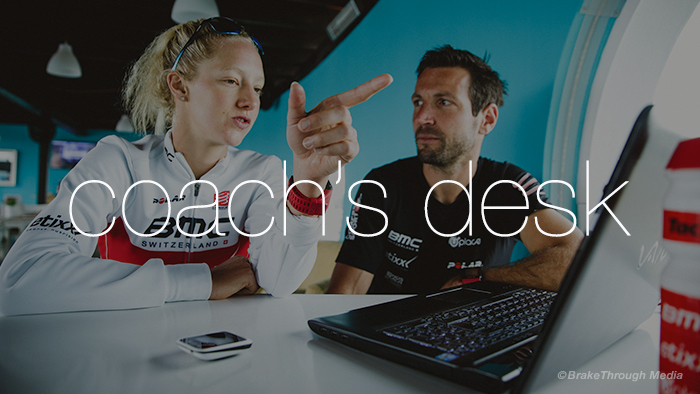As a coach, your role is often multifaceted depending on the athlete and the season. You juggle constantly between monitoring your athletes’ physical fitness and race readiness with their overall health and emotional well being. Recovery is the link between these various areas of your coaching focus, and as such it plays an important role in not only helping your athletes achieve success but also maintaining longevity in the sport. In this month’s Coach’s Desk we asked:
How do you communicate the importance of recovery to your athletes and how do you monitor your athletes’ recovery?
Andy Kirkland
“Most athletes can talk about the importance of recovery in the adaptation process. However, very few listen to their coaches or their own bodies until they’ve gone too far. That’s fine by me because athletes must learn to take responsibility and ownership for their training program. My job is to help them understand how much recovery they need and to learn from their mistakes. Total stress equals training stress plus life stress and there’s no wholly valid metric to measure both. Rather the best tool I have is the question: “Tell me how you feel?” Indeed, most of my coaching is built around eliciting an honest response from this very question.”
Katee Pedicini
“To communicate the importance of recovery I chat to my athletes about the physiological process of adaptation so they have “buy in” to easy sessions, days off, walks, yoga and taking it easy. Tying this into a conversation regarding the ins and outs of how TSS (Training Stress Score) and TSB (Training Stress Balance) work also helps. As part of their workout description in TrainingPeaks I also suggest recovery protocols such as legs up the wall, recovery boots or infrared saunas. This helps keep them accountable.
I monitor their recovery through metrics and the performance management chart (PMC) in TrainingPeaks, while also “listening” to their workout comments. For those that utilize HRV (Heart rate variability) I find this a very useful tool to monitor fatigue, illness and recovery.
Gale Bernhardt
“People who seek my personal coaching services are driven, high-performance human beings in nearly all aspects of life. I usually begin my discussion on recovery with the fact that resting is often counterintuitive for high achievers, and I understand that. I ask each athlete to trust me for about six weeks so we can both see the benefits of a training plan that includes planned stress and recovery. In that time I have key workouts I use to look for quantifiable results in one or more categories. Examples include improved power over six weeks, specific power numbers on key workouts, faster speeds or lower heart rate cost for a given speed.
I also ask athletes to comment on each workout, using at least one to three sentences, to let me know how it went and how they feel. Never skip the comments, even if you’re self-coached. Using a combination of the data and comments, it is easy to see performance and motivation increase as planned recovery is implemented. With inadequate recovery, performance and motivation decreases. It’s also easy to look back to see the workouts and conditions that created success—months and even years later.”
Philip Hatzis
“Having a strong element of trust between your athlete as a coach ensures that you can work with the athlete to enable recovery in their training. In the fast-paced world of amateur athletes, finishing a session usually leads straight to picking up the kids, going to work, being with the family or all the above. This often means that recovery doesn’t happen “by the book.” We need to work out smart ways to help that happen. In many instances, looking at the lifestyle as a whole and not just the training aspect will result in a better allocation of recovery time. This will result in a more balanced athlete and a more content one.
Monitoring an athlete’s recovery can be done in many different ways:
- Technologically: HRV, sleep, PMC, testing heart rate, etc.
- Qualitatively: sleep quality, RPE, “feel good factor,”mood, fatigue, etc.
- Responsively: training KPI’s, trends etc.
No single way is the best, and by using a combination, we achieve a 360-degree view of the athlete. Sometimes the data helps lead a conversation and sometimes the conversation yields more information than you would otherwise see in the data. It’s our duty as coaches to use both areas to full effect to get a holistic picture of the athlete and make informed decisions to improve their well-being and ultimately to improve their performance.”



